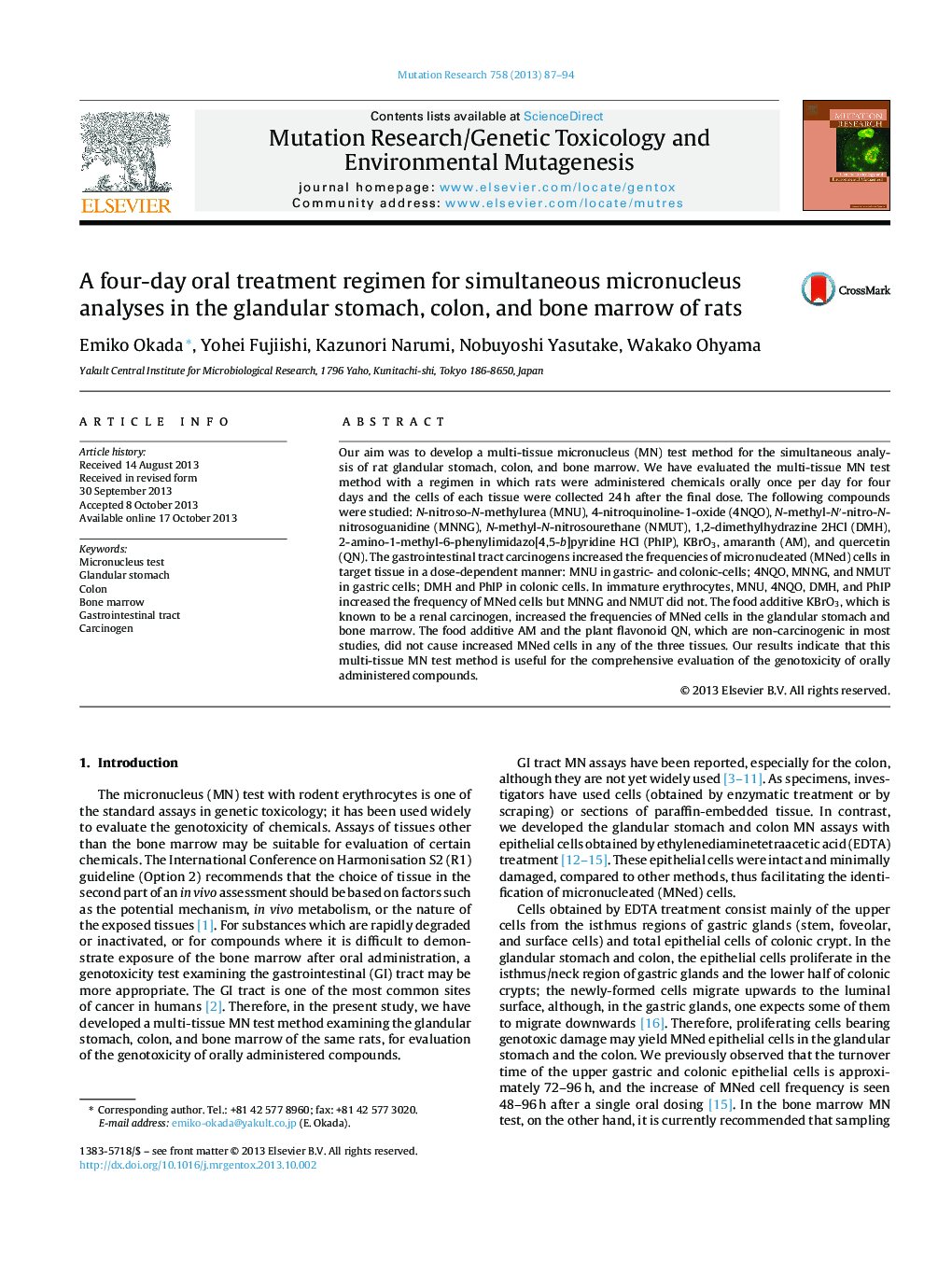| Article ID | Journal | Published Year | Pages | File Type |
|---|---|---|---|---|
| 2148024 | Mutation Research/Genetic Toxicology and Environmental Mutagenesis | 2013 | 8 Pages |
•We developed a rat multi-tissue micronucleus (MN) test method with 4 daily oral doses.•Genotoxic carcinogens increased MNed cells in the stomach, colon and/or bone marrow.•MNNG and NMUT increased MNed cells in the stomach but not in the bone marrow.•Amaranth and quercetin showed negative results in any of the three tissues.•This method is useful for evaluating the genotoxicity of orally administered compounds.
Our aim was to develop a multi-tissue micronucleus (MN) test method for the simultaneous analysis of rat glandular stomach, colon, and bone marrow. We have evaluated the multi-tissue MN test method with a regimen in which rats were administered chemicals orally once per day for four days and the cells of each tissue were collected 24 h after the final dose. The following compounds were studied: N-nitroso-N-methylurea (MNU), 4-nitroquinoline-1-oxide (4NQO), N-methyl-N′-nitro-N-nitrosoguanidine (MNNG), N-methyl-N-nitrosourethane (NMUT), 1,2-dimethylhydrazine 2HCl (DMH), 2-amino-1-methyl-6-phenylimidazo[4,5-b]pyridine HCl (PhIP), KBrO3, amaranth (AM), and quercetin (QN). The gastrointestinal tract carcinogens increased the frequencies of micronucleated (MNed) cells in target tissue in a dose-dependent manner: MNU in gastric- and colonic-cells; 4NQO, MNNG, and NMUT in gastric cells; DMH and PhIP in colonic cells. In immature erythrocytes, MNU, 4NQO, DMH, and PhIP increased the frequency of MNed cells but MNNG and NMUT did not. The food additive KBrO3, which is known to be a renal carcinogen, increased the frequencies of MNed cells in the glandular stomach and bone marrow. The food additive AM and the plant flavonoid QN, which are non-carcinogenic in most studies, did not cause increased MNed cells in any of the three tissues. Our results indicate that this multi-tissue MN test method is useful for the comprehensive evaluation of the genotoxicity of orally administered compounds.
